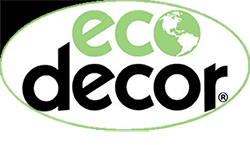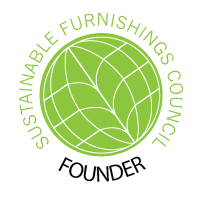FAQ's
- I would really like to get more involved with Green Design and perhaps become a LEED® AP (Accredited Professional). What is the best way to get started?
- Can you recommend some good books to start my Green Design library?
- I've always thought that Green Design would compromise asthetics. Is that true?
- What exactly does "Low VOC" mean?
- Where can I find Low VOC paints, varnishes etc.?
- Can you provide information on mold resistant drywall?
- Are there any chemical free options to termite control?
- What are some options for specifying "Green" Cabinetry?
- What is meant by Cradle-to-Grave and Cradle-to-Cradle?
- How can we help to reduce or eliminate the billions of pounds of carpet and other flooring disposed of in our landfills every year?
- What is off gassing?
- Can products be LEED® certified?
To summarize and clarify the links above:
- The U.S. Green Building Councils website. is a starting point.
- Find your local USGBC chapter.
- USGBC website section dedicated to LEED®
- Find workshops, online courses etc...
- Find workshops in a specific location or of a specific type.
- How to get LEED® accredited.
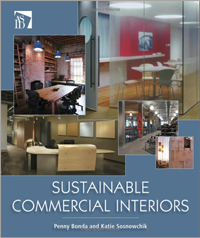
|
Sustainable Commercial Interiors
Hardcover, 322 pages Publisher: Wiley By Penny Bonda & Katie Sosnowchik A step by step guide to designing environmentally friendly commercial interiors. $75.00 (including sales tax and shipping) |
|
|
|
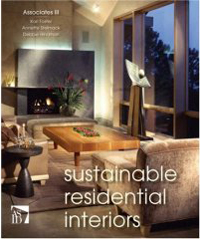
|
Sustainable Residential Interiors
Hardcover, 448 pages Publisher: Wiley by Associates III, (Kari Foster, Annette Stelmack, Debbie Hindman) An illustrated guide to "green" design strategies $75.00 (including sales tax and shipping) |
|
|
|
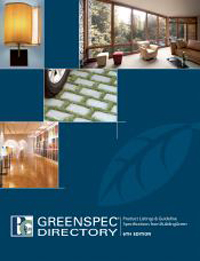
|
GreenSpec Directory (Commerical)
6th Edition, Paperback, 492 pages Publisher: BuildingGreen, Inc. The 6th edition of GreenSpec Directory includes information on nearly 2,000 green building products carefully screened by the editors of Environmental Building News. Directory listings cover more than 250 categories—from access flooring to zero-VOC paints. Included are product descriptions, environmental characteristics and considerations, and manufacturer contact information with Internet addresses. More than 200 listings have been added since the last edition, and about 100 products have been removed-either because they have been discontinued, because the manufacturing has changed (reduced recycled content, for example), or the GreenSpec criteria have been tightened so the lowest-performing products no longer qualify. Organized according to the 16-division CSI MasterFormat™ system, the GreenSpec Directory also includes guideline specifications language that can help architects and specifiers develop green project specifications. No advertising. No sponsorships. $95.00 (including sales tax and shipping) |
|
|
|
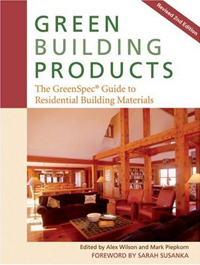
|
Green Building Products: The GreenSpec Guide to Residential Building Materials
2nd Edition, Paperback, 352 pages Publisher: New Society Publishers Includes descriptions and manufacturer contact information for more than 1,400 environmentally preferable products and materials from ag-fiber panels to zero-VOC paints. All phases of residential construction, from sitework to flooring to renewable energy, are covered. Products are grouped by function, and each chapter begins with a discussion of key environmental considerations, and what to look for in a green product. Categories of products include Sitework and landscaping, Outdoor structures, Decking, Foundations, footers and slabs, Structural systems and components, Sheathing, Exterior finish and trim, Roofing, Doors and windows, Insulation, Flooring and floor coverings, Caulks and adhesives, Paints and coatings, Mechanical systems/HVAC, Plumbing, electrical and lighting, Appliances, Furniture and furnishings, Renewable energy & Distributors and retailers. A miscellaneous section also lists products for hazardous materials testing and remediation, insect control, recycling, and wood products certification. An index of products and manufacturers makes for easy navigation. There is no more comprehensive resource for both the engaged homeowner, as well as all those who design and build homes. $40.00 (including sales tax and shipping) |
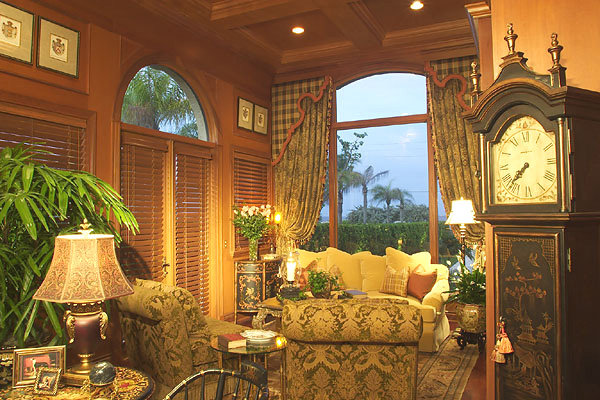
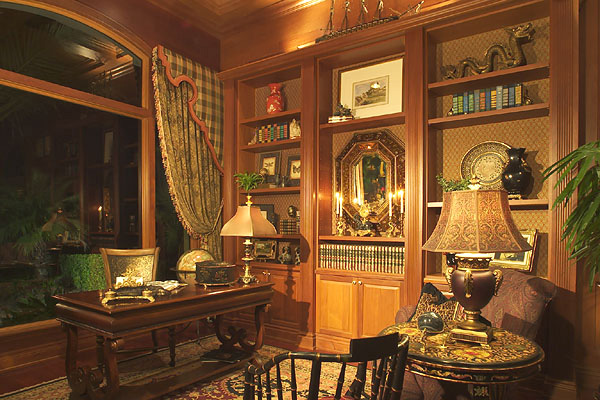
- Area Rug above is 100 percent wool with use of natural dyes
- Upholstery is exclusively solid wood construction
- Cornices are made with formaldehyde free plywood
- All Adhesives used are non-toxic
- Draperies are made from natural fibers and blinds are solid wood
- Wood flooring is from certified forestry
- Large window expanse offers natural daylight for energy efficiency
- Window film reduces glare and offers thermal comfort and energy efficiency
- All artificial lighting is individually controlled with dimmers for energy efficiency
- Upholstery backed library builtins used for acoustics
- Natural ventilation is achieved with doors and windows that open to the outside
- Recycled furnishings from antique and consignment shops are used for conservation
- New furniture from show room floor samples used to minimize off-gassing
- Low VOC (Volitile Organic Compound), non-solvent, and non-toxic adhesives and finishes are used throughout the design
- Indoor plants used for natural air purification
Go to www.advancedenergy.org for more information.
Be aware that due to U.S. EPA paint labeling regulations, some toxic ingredients found in conventional, low-VOC, and no-VOC paint may not be listed on the paint container. An MSDS sheet should be consulted for a complete list of all the paint ingredients. It should also be noted that latex paint is not made with latex rubber, and thus it does not pose a threat to those with latex allergies. "Latex" is just a name used to describe rubber-based paint. Latex paint is made with polyvinyl material with acrylic resin, not natural rubber latex.
Go to www.consumersearch.com for more information on this topic.
Be aware that due to U.S. EPA paint labeling regulations, some toxic ingredients found in conventional, low-VOC, and no-VOC paint may not be listed on the paint container. An MSDS sheet should be consulted for a complete list of all the paint ingredients. It should also be noted that latex paint is not made with latex rubber, and thus it does not pose a threat to those with latex allergies. "Latex" is just a name used to describe rubber-based paint. Latex paint is made with polyvinyl material with acrylic resin, not natural rubber latex.
Go to www.gp.com for more information on this topic.
By using the Termimesh System you projects can earn mutilple LEED® points under the Green Building Rating System.
It is up to you to determine if this product complies with local building codes.
Go to www.termimeshusa.com for more information on this topic.
That being said, I always recommend that any casegoods that are made from wood meets the approval of the FSC (Forest Stewardship Council). The FSC is a non-profit organization devoted to encouraging the responsible management of the world's forests. FSC sets high standards that ensure forestry is practiced in an environmentally responsible, socially beneficial, and economically viable way.
For example, Harden Furniture has achieved certification for both company-managed timber harvesting activities, as well as our procurement and land management systems through the nationally acclaimed Sustainable Forestry Initiative® (SFI ) program.
Go to www.fscus.org for more information on this topic.
Go to citm.utdallas.edu (a PDF document) for more information on this topic.
Go to www.starnetflooring.com for more information on this topic.
All chemically processed materials produce some level of off gassing. Many products should be off gassed if possible before installation or at least after installation. Carpeting is a good example of something that should absolutely be off gassed. Often your carpet installer can provide this service for you. They can unroll the carpet in a well ventilated area for 48 hours prior to installtion. If this isn't an available option than certainly provide as much ventilation as possible to the outside for at least 48 hours after installation. Open windows and use proper air filtering systems.
Go to www.natureneutral.com for more information on this topic.
Go to http://www.usgbc.org/ShowFile.aspx?DocumentID=3330 for more information on this topic.
